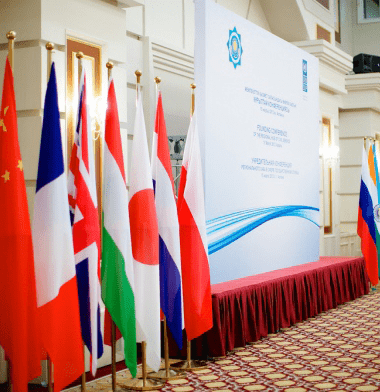Digital Transparency in Governance: Kazakhstan’s Experience
How the "Situational and Analytical Complex" Project Shapes the Digital Future of Public administration in Kazakhstan and Contributes to the Achievement of the United Nations Sustainable Development Goals
Digitalization of Public administration
In recent years, Kazakhstan has pursued a consistent course toward the digital transformation of Public administration.
One of the most notable examples is the Situational and Analytical Complex (SAC) — a high-tech platform for data analysis, monitoring, and management, developed by the Engineering and Technical Center of the Department of Presidential Affairs of the Republic of Kazakhstan.
This innovative project is designed to support strategic decision-making at the highest level by providing up-to-date, in-depth, and structured information in key areas such as monitoring the implementation of directives, human resources processes, the socio-political situation, socio-economic policy, crime, and public safety.
Today, the SAC is implemented within the Presidential Administration and the Department of Presidential Affairs of the Republic of Kazakhstan, and has already demonstrated its effectiveness in the digital transformation of governance.
How Does the Platform Operate?
The SAC collects and visualizes data from various sources in real time, enabling comprehensive data analysis. The system is capable of processing and storing large volumes of information and presenting it via an interface in the form of reports, tables, charts, and diagrams.
All functions are carried out within a secure internal network, in full compliance with information security requirements.
The system supports a wide range of tasks: from monitoring the implementation of directives and analysing HR processes to tracking the non-fulfilment of key indicators at the national level.
Today, the SAC is integrated with government information systems such as the Unified HR System, “E-Qyzmet”, and the Smart Data-Ukimet Integrated Analytical System. It covers more than 500 indicators across various areas at the national level and in 20 regions of the country.
This analytical approach enables decision-makers not only to respond in a timely manner, but also to act proactively — identifying hidden risks and addressing systemic failures.
This digital solution is already producing tangible results and making a meaningful contribution to the achievement of the United Nations Sustainable Development Goals (SDGs), particularly in establishing open and just institutions.
Specifically, the SAC contributes to Goal 16, which is aimed at building effective, accountable, and transparent institutions. It also aligns with Goal 8 by supporting decent work and sustainable economic growth through the development of human capital.
Furthermore, the system supports Goal 5 by promoting gender equality through the monitoring of balance in appointments and the prevention of implicit discrimination.
A Digital Governance Model with Global Potential
Today, the SAC is not merely a local digital tool. It is a systemic project that could serve as a model for other countries seeking to modernize Public administration.
In the context of global challenges, where the resilience of institutions is a cornerstone of national security, such platforms acquire strategic significance. Kazakhstan has taken an important step toward building a state in which technology serves not only efficiency, but also fairness.
Source: RSE on REM “Engineering and Technical Center of the Department of Presidential Affairs of the Republic of Kazakhstan”



